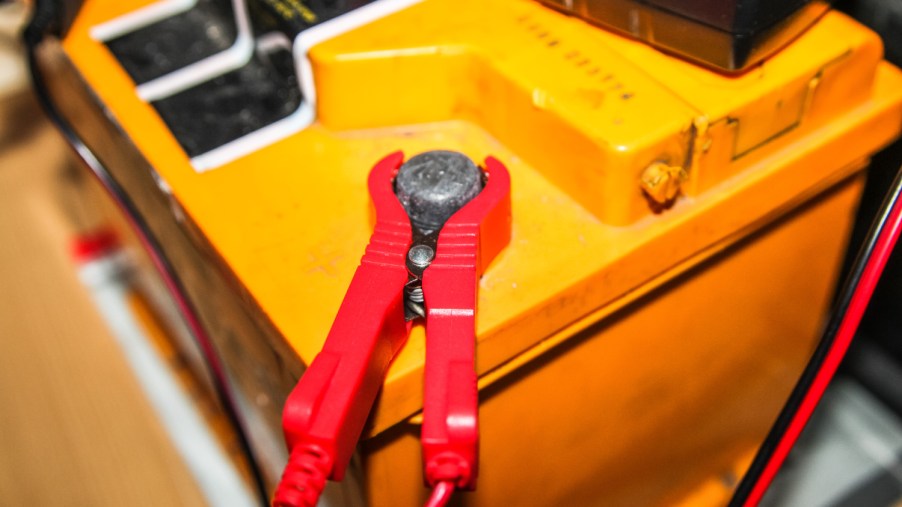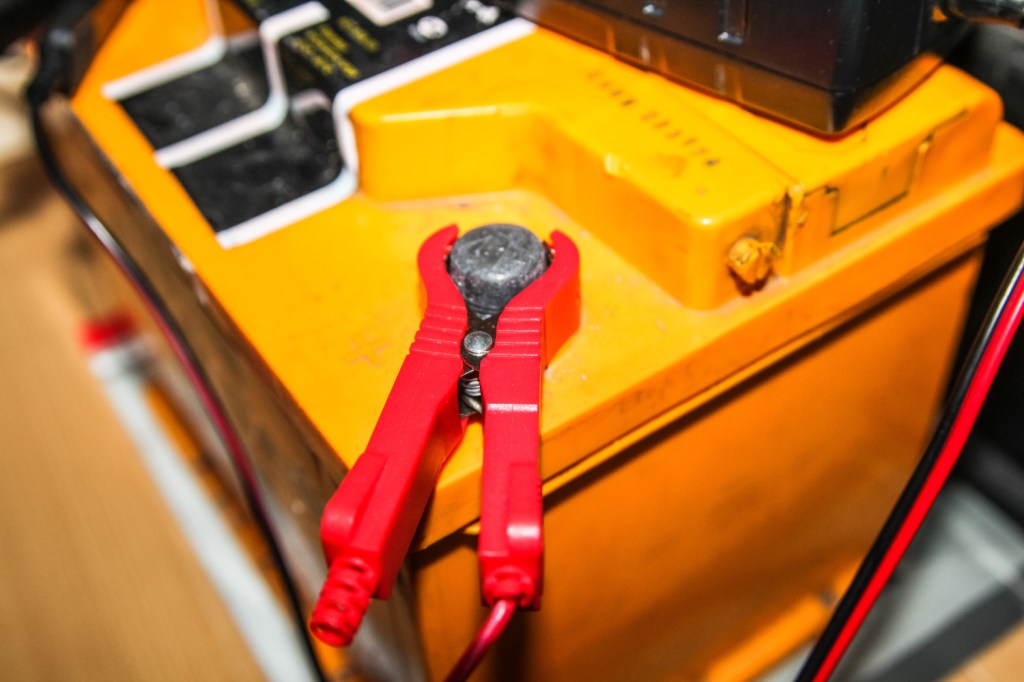
Can You Jump-Start an Electric Vehicle Battery?
If you have decided your next new car will be an electric vehicle, there might still be a lot of unknowns in the process. How do you charge your new EV? What kind of insurance do you need? And more importantly, can you jump-start an electric vehicle battery?
You can jump-start an electric vehicle battery, but read this first

Having jumper cables in your trunk might be an everyday occurrence with your old gasoline-powered car. No one wants to get stuck with a vehicle that doesn’t work, especially in bad weather. So can you jump-start an electric vehicle? According to Review Geek, you cannot jump-start the larger battery pack in an electric car that makes it run. This is a large, high-voltage battery pack that powers the EV battery.
There is a second battery in an EV that you can jump-start, though. This smaller battery helps power the lights, door locks, and other essential electrical items to get your car up and running. You can jump this 12-volt battery, and you probably will have to do so at some point during your car’s life.
Just like an internal combustion engine (ICE) vehicle, this battery can die if you leave a light on or leave a door open on accident. In that case, you will have to jump-start the EV like any other car. But there are some crucial differences you should know before you attempt this.
Kelley Blue Book helps you jump-start your electric vehicle battery
Jump-starting your new electric vehicle is a bit more complicated than your run-of-the-mill car. That is because the 12-volt battery you need to jump isn’t always in the same location or even in a location that is easy to find. James May famously battled his Tesla Model S after leaving it sitting for an extended period. His battery died, and he couldn’t get to the 12-volt to even jump-start it.
According to Kelley Blue Book, you need a car with a negative ground system to jump your EV. That is normal with ICE cars. You don’t want to jump your EV with another EV. You want to put the electric vehicle and the jumping vehicle close together but not touching. Turn on the parking brake and turn everything off in both cars.
You want to connect the end of “the red positive (+) cable to the discharged battery’s positive (+) terminal. After that, attach the other end of the positive (+) jumper cable to the positive (+) terminal of the booster vehicle battery.” Then you want to place the black negative (–) cable to the good battery’s negative (–) terminal. After that, connect the negative (-) jumper cable to the negative (-) grounding point for the discharged battery.
Let’s get that EV party started!
Check that the cables are away from moving parts and that the clamps have a good metal-to-metal contact on both the battery terminals and the charging points. You can then start the ICE vehicle and try to turn on the electric vehicle at that time. If you don’t have a gasoline-powered car to jump your electric vehicle, you can also use a portable jump-starter.
You want to keep the jump-started electric vehicle running for a few minutes while connected. Kelley Blue Book says 20 minutes is a good amount of time to charge your EV battery. After that, you can disconnect the vehicles. You will want to reverse the sequence of events you just did in order to keep the vehicles running smoothly. Do not let the clamps touch and do not let the clamps touch any other metal surfaces.
It might be a good idea to have your battery tested to ensure the issue won’t happen again. Be careful throughout the process and if something doesn’t seem right, ask for help!



